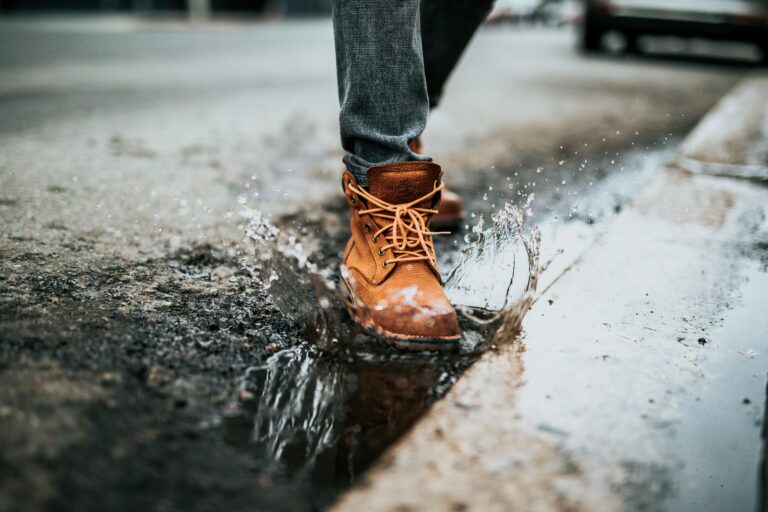Banish the Odor: Expert Tips on Removing Smell from Leather Car Seats
Removing Smell from Leather
Challenges with Leather Smells
Leather, being a natural material, has a tendency to attract bacteria and develop pungent smells over time, making it harder to clean compared to synthetic fibers. These unpleasant odors can affect various items, including leather car seats, jackets, and bags. The challenge lies in effectively removing the odors without damaging the material.
Leather’s porous nature allows it to absorb smells from different sources such as sweat, food, and environmental pollutants. Over time, these smells can become deeply embedded, making them difficult to eliminate. Additionally, improper cleaning methods or products can damage the leather, making it stiff and dry. Therefore, it is essential to use appropriate techniques and products to maintain leather’s integrity while addressing odor issues.
Eliminating Odors from Leather
To effectively remove the smell from leather car seats, a combination of appropriate cleaning products and techniques is required. Specific leather cleaners, designed to eliminate odor issues, can be purchased to effectively remove smells from leather surfaces like cars, sofas, and jackets (Von Baer). Here are some recommended steps to eliminate odors from leather:
-
Vacuuming:
Ensure that the car seats are free of loose dirt and debris by vacuuming them thoroughly. This helps prevent dirt from settling into the leather during cleaning. -
Leather Cleaner:
Use a high-quality leather cleaner to remove dirt and odor. Follow the manufacturer’s instructions for best results. For instance, the Leather Love cleaning and conditioning product can be used at least every 1 to 2 months, with more frequent use in hotter summer months. -
Deep Cleaning:
If the odor persists, consider deep cleaning by applying the Leather Love product and allowing it to sit on the leather surface for 3 to 4 hours or overnight. This helps in deep rehydration and odor elimination. -
Leather Guard:
Apply a Leather Guard on every 2nd or 3rd application of the Leather Love product. This helps to reduce wear on the seats, stitching, and seams. It also prevents stains from sweat and other sources from penetrating the leather (Bowden’s Own). -
Maintaining Freshness:
Keep the car interior ventilated to prevent odors from building up again. Using an air purifier inside the car can also help to maintain a fresh environment.
| Cleaning Step | Recommended Product | Frequency |
|---|---|---|
| Vacuuming | – | As needed |
| Leather Cleaner | Leather Love | Every 1 to 2 months |
| Deep Cleaning | Leather Love | Every 2nd or 3rd application |
| Protective Coating | Leather Guard | Every 2nd or 3rd application |
| Maintaining Freshness | Air Purifier | Regular intervals |
For more tips on maintaining and caring for your leather items, check out related articles such as how to remove smell from leather bag and how to remove smell from leather jacket. Proper care and maintenance are key to keeping your leather pieces smelling fresh and looking great.
Cleaning Leather Car Seats
Removing stains from leather car seats can be challenging, but with the right techniques and DIY methods, you can keep your seats looking and smelling fresh. Here, we’ll share professional tips on both stain removal techniques and DIY cleaning methods to help you clean leather car seats effectively.
Stain Removal Techniques
Stains on leather car seats require specific techniques for effective removal. Different types of stains like water, grease, and ink each need their own unique approach:
-
Water Stains: Use a soft microfiber cloth to gently blot the area dry. Avoid rubbing, as it may spread the stain further (Avalon King).
-
Grease Stains: Blot the stain with a clean cloth to remove excess grease. Apply cornstarch to the stained area and let it sit for several hours to absorb the grease. Vacuum the cornstarch and wipe with a damp cloth (Avalon King).
-
Ink Stains: Dab the stain with a soft, clean, dry microfiber towel. For stubborn ink stains, specialized cleaning products or professional help are advisable. Our article on how to get pen out of leather provides additional tips for ink stain removal.
Here is a summary table for quick reference:
| Stain Type | Removal Technique |
|---|---|
| Water Stains | Blot dry with a soft microfiber cloth |
| Grease Stains | Blot, apply cornstarch, let sit, vacuum, and wipe with a damp cloth |
| Ink Stains | Dab with clean dry microfiber towel; use specialized products for stubborn stains |
DIY Cleaning Methods
There are several DIY options for cleaning leather car seats. While these methods can be effective, they should be used with caution to avoid causing damage to the leather:
-
Vinegar and Olive Oil Solution: Mix one part white vinegar with two parts olive oil. Apply the mixture to a soft cloth and gently rub it onto the leather surface. This method can help clean and condition the leather simultaneously.
-
Toothpaste and Baking Soda: For tougher stains, apply a small amount of non-gel toothpaste directly to the stain. Gently rub with a soft cloth and then wipe clean with a damp cloth. A paste of baking soda and water can also be effective for stubborn stains.
Proceeding with caution is advisable to avoid further damage to your leather seats. Some DIY methods such as using toothpaste and baking soda may not be suitable for all leather types, so always perform a patch test first. For more in-depth information on leather maintenance, check out guides on how to get stains out of leather.
Example of DIY Cleaning Solution Usage
| DIY Method | Steps |
|---|---|
| Vinegar and Olive Oil | Mix 1 part vinegar with 2 parts olive oil, apply to cloth, gently rub |
| Toothpaste and Baking Soda | Apply non-gel toothpaste, gently rub, wipe clean with a damp cloth |
For more tips on how to keep your leather car seats in top shape, visit our related articles on how to remove smell from leather car seats and other practical guides.
Leather Care Products
Proper care for your leather car seats involves both cleaning and conditioning to maintain their longevity and appearance. Here are essential products to consider for keeping your leather seats in top condition.
Leather Cleaners
Specific leather cleaners are designed to eliminate odor issues and remove various types of stains from your car seats. These cleaners come with clear instructions and are effective in tackling the unique challenges posed by leather. For removing odors, a leather-specific cleaner is recommended.
Common Leather Stains and Suitable Cleaners:
| Stain Type | Cleaning Method |
|---|---|
| Water Stains | Drying with a soft microfiber cloth |
| Grease Stains | Blotting, application of cornstarch, vacuuming |
| Ink Stains | Dabbing with a dry microfiber towel or professional cleaner |
For detailed instructions on removing specific types of stains, check out how to get stains out of leather.
Conditioning Leather
Conditioning leather is essential for maintaining its softness and preventing it from cracking or drying out. A good quality leather conditioner not only keeps the leather supple but also adds a protective layer to shield it from daily wear and tear.
For optimal care, use the Leather Love conditioner every 1 to 2 months, especially during hotter months when the leather is more prone to drying out. Also, to ensure maximum protection, reapply the Leather Guard every 2nd or 3rd application of Leather Love.
Conditioning Schedule:
| Season | Frequency |
|---|---|
| Summer | Monthly |
| Winter | Every 1 to 2 months |
For more in-depth care tips, you can read about why does leather crack and peel.
Using the right leather care products will ensure that your leather car seats stay in excellent condition, free from odors and stains. For further guidance on how to remove smell from different leather items, explore our resources on how to remove smell from leather sofa and how to remove smell from leather jacket.
Nappa Leather Guide
Characteristics of Nappa Leather
Nappa leather is highly regarded for its luxurious qualities and is often used in high-end products. Here are some key characteristics:
- Soft Texture: Nappa leather is known for its distinctively soft and pliable texture, making it a preferred choice for luxury items.
- Material Source: Typically made from the outermost layer of hides such as lamb, kid, or calf, though it can come from other animals as well (Manuel-Dreesmann).
- Chrome Tanning: This leather undergoes a chrome tanning process, where hides are soaked in a solution of water and chromium salts. This method gives Nappa leather its signature softness, durability, and water resistance.
- Durability: The chrome tanning process makes Nappa leather resistant to bacterial decay, heat, salt, and water damage, contributing to its longevity (Manuel-Dreesmann).
- Historical Background: Nappa leather was first created by Emanuel Manasse in 1875 for the Sawyer Tanning Company in Napa, California (Manuel-Dreesmann).
Maintenance of Nappa Leather
Proper maintenance is crucial for preserving the quality and extending the lifespan of Nappa leather. Here are some essential care tips:
- Regular Cleaning: Use a soft, dry cloth to regularly wipe down the leather, removing any dust or debris.
- Stain Removal: For stubborn stains, use a specialized leather cleaner. Always test the cleaner on a small, inconspicuous area first to ensure compatibility.
- Conditioning: Apply a leather conditioner every few months to maintain the leather’s softness and flexibility (Manuel-Dreesmann).
- Avoid Water Exposure: Keep Nappa leather away from water to prevent damage. If it does get wet, blot it dry immediately with a clean cloth.
- Professional Help: For significant stains or damage, seek professional cleaning services to avoid further harm to the leather.
Maintaining Nappa leather also involves being aware of substances that could damage it. For more tips on leather care, visit our guides on how to get stains out of leather and how to soften hard leather.
By understanding the characteristics and proper maintenance of Nappa leather, you can ensure that your leather products remain in excellent condition for years to come. If you’re dealing with odors in your leather products, explore methods to remove smell from leather to keep them fresh and pleasant.
Nappa Leather in Cars
Advantages of Nappa Leather
Nappa leather is a premium choice for car interiors, particularly in luxury vehicles. Renowned for its breathability, durability, and resistance to heat and cold, Nappa leather provides a comfortable and stylish option for seats, steering wheel covers, and interior trims.
A few key advantages of Nappa leather include:
- Breathability: Keeps the seats cool in the summer and warm in the winter.
- Durability: Highly resistant to wear and tear, ensuring longevity.
- Design Versatility: Available in a range of colors and textures, adding aesthetic value to the car’s interior.
- Easy Maintenance: Simple to clean and care for, with fewer maintenance requirements.
- Resale Value: Vehicles with Nappa leather interiors often have higher resale values (Manuel-Dreesmann).
Care Tips for Nappa Leather
To maintain Nappa leather’s luxurious appeal and ensure its longevity, proper care and maintenance are essential. Here are some professional tips for caring for your Nappa leather car seats:
- Regular Cleaning: Use a soft, dry cloth to remove dust and dirt from the surface. This prevents debris from accumulating and preserves the leather’s texture.
- Stubborn Stains: For tougher stains, opt for a specialized leather cleaner. Apply it gently using a microfiber cloth to avoid damaging the leather.
- Conditioning: Apply a leather conditioner every few months to maintain the softness and flexibility of the Nappa leather. This helps prevent cracking and keeps the leather supple.
- Avoid Water Exposure: Protect your Nappa leather seats from water and moisture to prevent stains and damage. Wipe any spills immediately with a dry cloth.
- Professional Help: For significant stains or damage, seeking professional cleaning services is recommended to ensure proper care and restoration.
Follow these steps to keep your Nappa leather seats in pristine condition:
| Task | Frequency |
|---|---|
| Dusting with a soft, dry cloth | Weekly |
| Cleaning with leather cleaner | As needed |
| Conditioning | Every few months |
| Professional cleaning | Annually or as required |
These care tips will not only keep your car’s interior looking elegant but also help in maintaining the overall value of the vehicle. For more on maintaining different types of leather, check out our articles on how to soften hard leather and how to get pen out of leather.
By taking these expert-recommended precautions and maintenance steps, you can ensure your Nappa leather car seats remain luxurious and comfortable for years to come.
Leather Cleaning Precautions
Avoiding Damaging Substances
When caring for leather, it’s important to avoid substances that can cause damage. Leather, being a natural material, tends to attract bacteria and develop smells over time, which can make it more difficult to clean compared to synthetic fibers (Von Baer). Here are some substances to avoid:
- Harsh Chemicals: Avoid using bleach, ammonia, or any acidic solutions which can strip leather of its natural oils, causing it to crack and become brittle.
- Excessive Water: Leather is sensitive to water. Over-saturating leather car seats can lead to mildew and additional odor issues. Instead, use a lightly damp cloth for cleaning.
- Abrasive Tools: Rough brushes and scouring pads can scratch the leather surface, leading to wear and tear over time. Use soft, microfiber cloths for cleaning.
- Unspecified Cleaners: Using non-leather-specific cleaners can lead to adverse effects on the leather. Always opt for cleaners designed specifically to eliminate odors from leather materials.
Proper Leather Maintenance
Maintaining your leather car seats properly can help keep them in pristine condition while preventing odors and wear. Follow these guidelines for effective upkeep:
-
Regular Cleaning: Clean your leather seats regularly using specific leather cleaners to avoid buildup of dirt and sweat that can lead to odor (Von Baer). Use the Leather Love cleaning and conditioning product at least every 1 to 2 months, with more frequent use during hotter months.
-
Conditioning: Conditioning helps to rehydrate the leather, especially if it feels hard or neglected. Applying Leather Love twice or thrice and leaving it on for 3 to 4 hours, or overnight, during the second cleaning session can deeply rehydrate the hide.
-
Protective Measures: Use Leather Guard to reduce wear on the seats, bolsters, stitching, and seams. This product also prevents stains from sweat and blue jeans from transferring into the leather (Bowden’s Own).
-
Temperature Control: Extreme temperatures can damage leather. Park in the shade during summer and use sunshades to block direct sunlight. In winter, avoid parking in extremely cold areas and regularly condition to prevent leather from drying out.
By following these precautions and maintaining your leather car seats appropriately, you can keep them looking and smelling fresh. For more tips on specific leather challenges and solutions, check out our guides on how to remove smell from leather jacket and how to remove smell from leather sofa.







